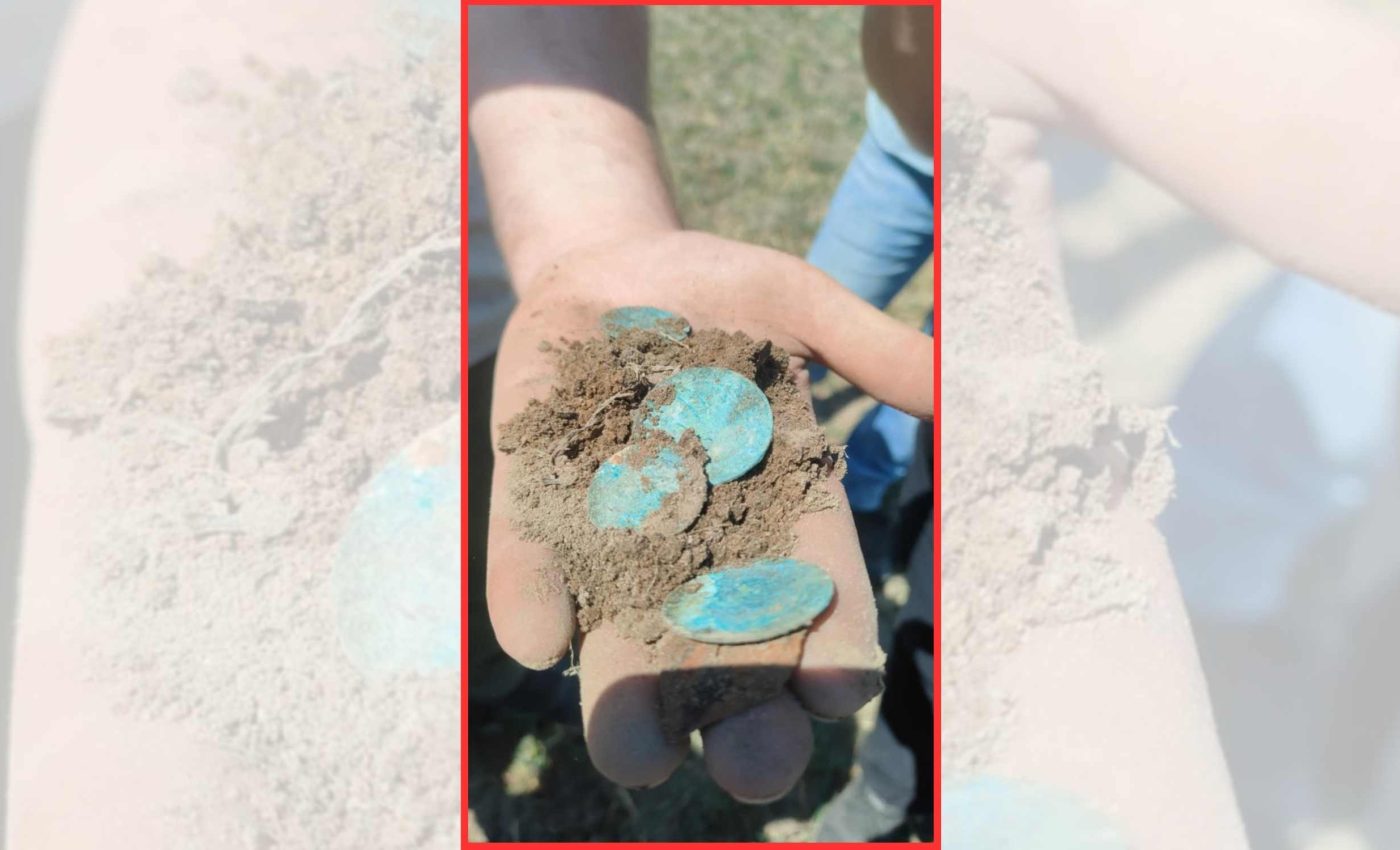
Couple discovers silver treasure hidden on their farm for 350 years
On a meadow in Bukowiec Wielki in northern Poland, a couple started clearing what they thought were rocks on their farm. Local officials later confirmed a total of 162 silver coins dated 1660 to 1679.
Beata and Romuald Jóźwiak discovered the treasure while working in their field near Janowiec Kościelny, a small farming village in northern Poland about 100 miles northwest of Warsaw.
After the coins are cleaned and preserved, they will be displayed at the Museum of the Borderlands in Działdowo, a nearby town known for its medieval castle and regional history exhibits.
What turned up in the soil
The research was led by the Museum Pogranicza in Działdowo (MPD), the regional institution now caring for the collection. Its team focuses on documenting and preserving the borderland’s past.
Archaeologists also recovered fragments of a clay jar that once held the coins. A hoard, a hidden bundle of valuables buried for safety, often surfaces when routine plowing or clearing moves soil.
The coin mix spans everyday and higher value money from the late 1600s. It includes pieces used for market purchases as well as larger transactions like rents or livestock.
Other finds include a copper alloy ring, a devotional medallion, buttons, and lead balls for a black powder firearm, a gun that uses loose powder and a lead ball.
Together these objects sketch the habits and worries of the people who lived and worked here.
Why the coins were hidden
The date range from 1660 to 1679 sits in the early modern period, a time between the Middle Ages and the Industrial Era. In this period of time, households often kept savings in metal rather than in notes or accounts.
This particular borderland region saw shifting armies and taxes that stressed everyday life. When uncertainty rises, people sometimes bury savings to avoid theft or sudden levies.
Scholars call the act of hiding valuables deposition, a deliberate placement meant to be recovered later. Many hoards never return to their owners due to violence, illness, or migration.
The coin mix suggests repeated small savings rather than one payday. It looks like careful household budgeting interrupted by events strong enough to keep the owner away.
What the coins tell us
A tymf, a debased Polish silver coin with less silver than its face value implied, circulated after the Swedish wars and reflected a strained treasury. A central bank brief explains how tymfs functioned as credit money under King John Casimir.
An ort, a silver coin originally worth a quarter of a taler, served in regional trade and tax payments. A museum catalog describes how its value shifted from 16 to 18 grosz with time.
A szóstak, a six grosz coin widely used in markets, turns up frequently in hoards from this century. An NBP profile outlines its design under King John III Sobieski.
Two coins in the collection were two thirds talers, higher value pieces often reserved for big purchases. In a mixed stash, such heavier coins usually signal funds set aside for major needs.
How the site was documented
Fieldwork followed a rescue excavation, an emergency dig to secure finds before loss or theft. Investigators opened a controlled trench and recorded each coin with simple, durable notes.
The couple reported the discovery immediately and the coins were passed to the regional heritage office for legal custody. This official process ensures the find remains public property and minimizes the risk of harm from illicit trade.
“My husband was restoring the meadow. He wanted to collect the stones that had been plowed up. It turned out they were coins,’ said Beata Jóźwiak.
Clear reporting allowed specialists to recover scattered pieces before weather or scavengers intervened. Careful collection protects both scientific value and the community’s connection to its past.
What happens next
The museum has begun conservation, careful cleaning and stabilization to prevent corrosion and loss. It plans to put the coins on public display at the start of 2026 in Działdowo.
Exhibits will likely present the hoard with its provenance, a record of where an object was found and who has cared for it since. That chain of custody lets students and curators revisit the evidence with fresh questions.
Finders in Poland benefit when they report discoveries quickly, because authorities can document the site and museums can tell the full story. This case shows how community, law, and science can pull together for the public good.
The Bukowiec Wielki coins add a crisp new chapter to the borderland’s story and set a clear example of ethical stewardship. Local students now have a home town case study of how a chance find becomes shared history.
—–
Like what you read? Subscribe to our newsletter for engaging articles, exclusive content, and the latest updates.
Check us out on EarthSnap, a free app brought to you by Eric Ralls and Earth.com.
—–













